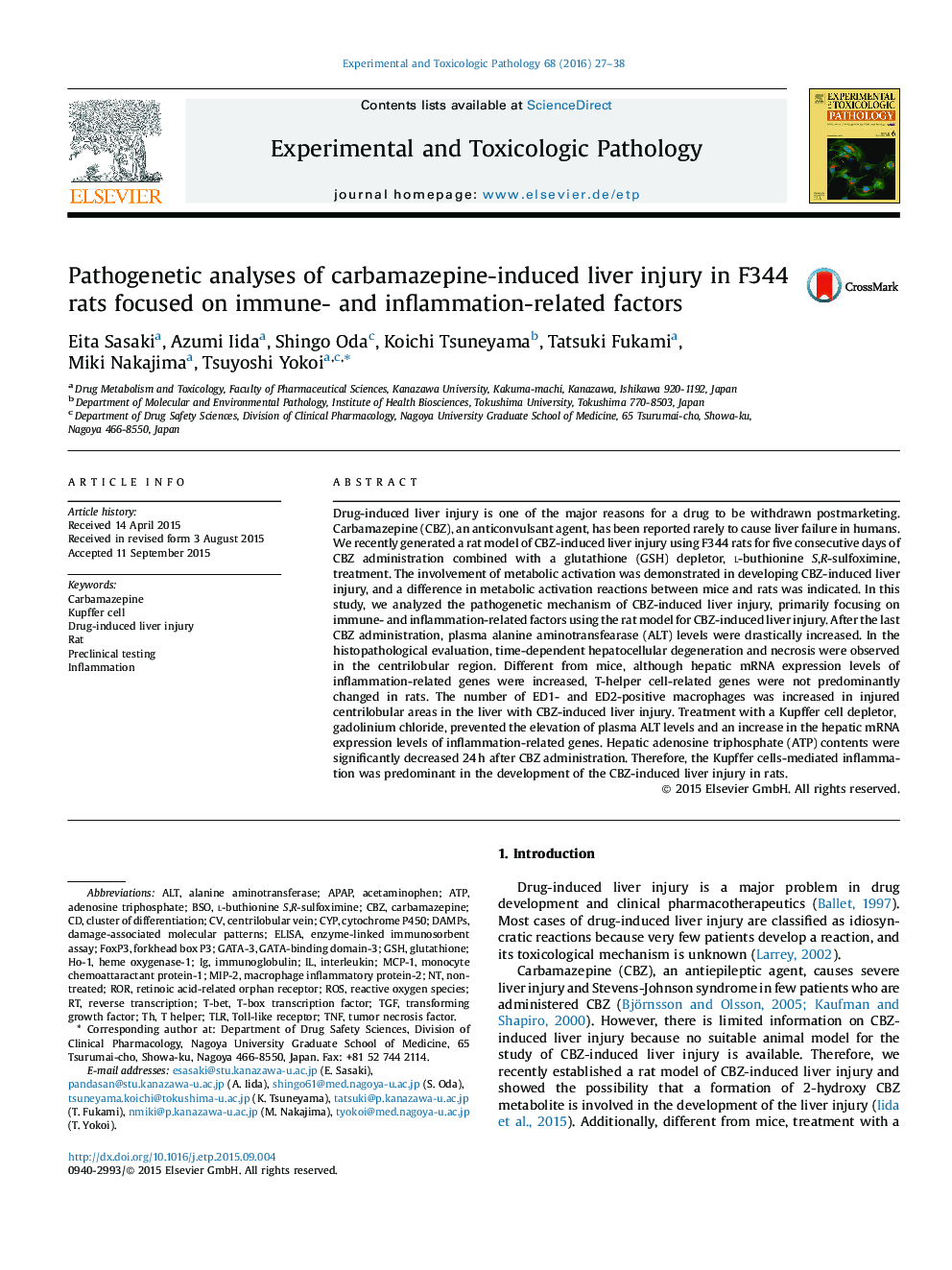| Article ID | Journal | Published Year | Pages | File Type |
|---|---|---|---|---|
| 5817074 | Experimental and Toxicologic Pathology | 2016 | 12 Pages |
Abstract
Drug-induced liver injury is one of the major reasons for a drug to be withdrawn postmarketing. Carbamazepine (CBZ), an anticonvulsant agent, has been reported rarely to cause liver failure in humans. We recently generated a rat model of CBZ-induced liver injury using F344 rats for five consecutive days of CBZ administration combined with a glutathione (GSH) depletor, l-buthionine S,R-sulfoximine, treatment. The involvement of metabolic activation was demonstrated in developing CBZ-induced liver injury, and a difference in metabolic activation reactions between mice and rats was indicated. In this study, we analyzed the pathogenetic mechanism of CBZ-induced liver injury, primarily focusing on immune- and inflammation-related factors using the rat model for CBZ-induced liver injury. After the last CBZ administration, plasma alanine aminotransfearase (ALT) levels were drastically increased. In the histopathological evaluation, time-dependent hepatocellular degeneration and necrosis were observed in the centrilobular region. Different from mice, although hepatic mRNA expression levels of inflammation-related genes were increased, T-helper cell-related genes were not predominantly changed in rats. The number of ED1- and ED2-positive macrophages was increased in injured centrilobular areas in the liver with CBZ-induced liver injury. Treatment with a Kupffer cell depletor, gadolinium chloride, prevented the elevation of plasma ALT levels and an increase in the hepatic mRNA expression levels of inflammation-related genes. Hepatic adenosine triphosphate (ATP) contents were significantly decreased 24Â h after CBZ administration. Therefore, the Kupffer cells-mediated inflammation was predominant in the development of the CBZ-induced liver injury in rats.
Keywords
DAMPsGATA-3CyPGSHHO-1CbzALTMCP-1APAPTLRRORTGFFOXP3BSOHeme oxygenase-1MIP-2T helperTNFROSAdenosine TriphosphateATPDrug-induced liver injuryAlanine aminotransferaseAcetaminopheninflammationdamage-associated molecular patternsimmunoglobulin interleukintransforming growth factorELISAEnzyme-linked immunosorbent assayPreclinical testingT-betToll-like receptorforkhead box P3cluster of differentiationreverse transcriptionKupffer cellCytochrome P450T-box transcription factor tumor necrosis factormacrophage inflammatory protein-2RatcarbamazepineGlutathioneReactive oxygen speciesRetinoic acid-related orphan receptor
Related Topics
Life Sciences
Agricultural and Biological Sciences
Animal Science and Zoology
Authors
Eita Sasaki, Azumi Iida, Shingo Oda, Koichi Tsuneyama, Tatsuki Fukami, Miki Nakajima, Tsuyoshi Yokoi,
